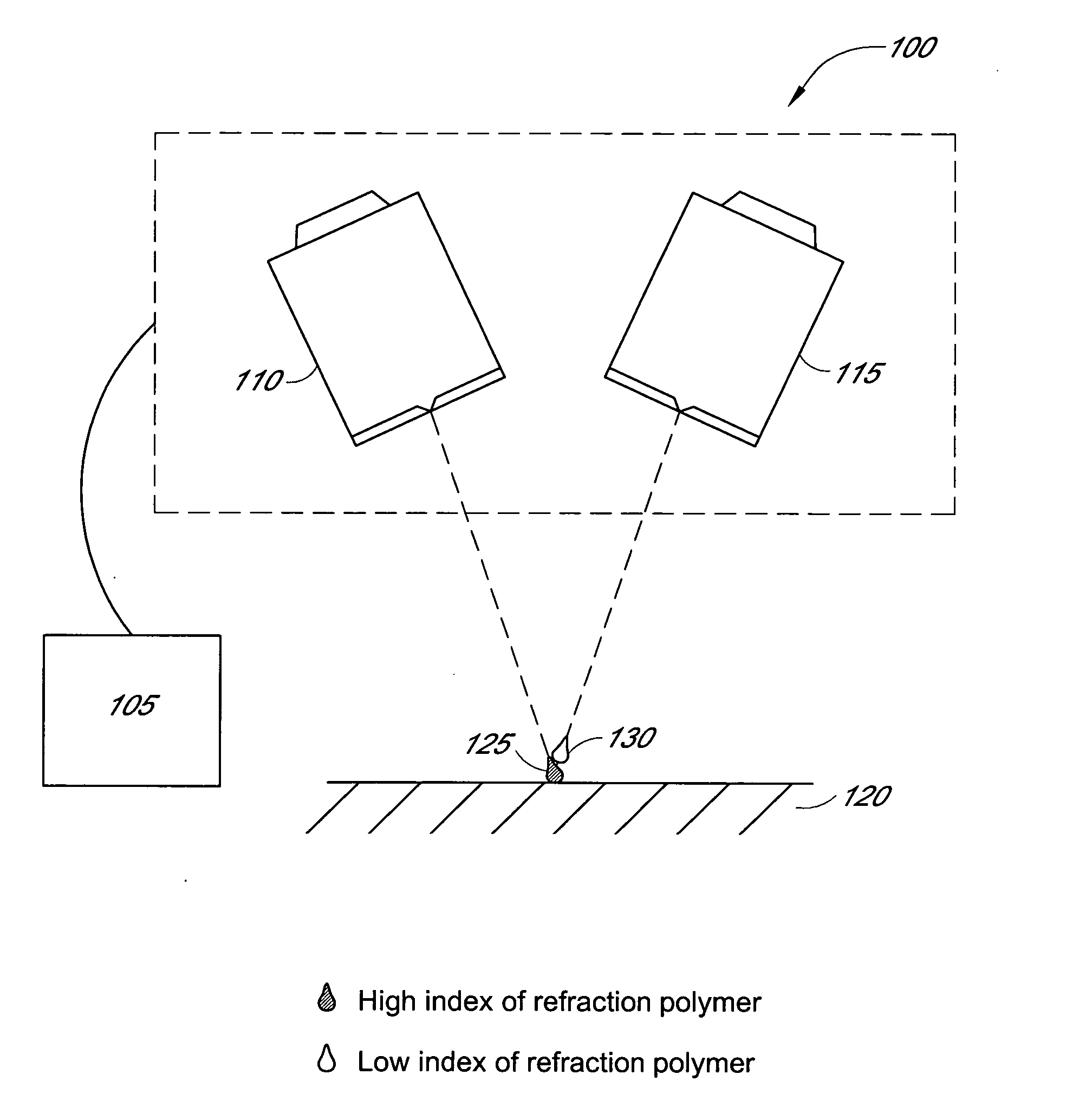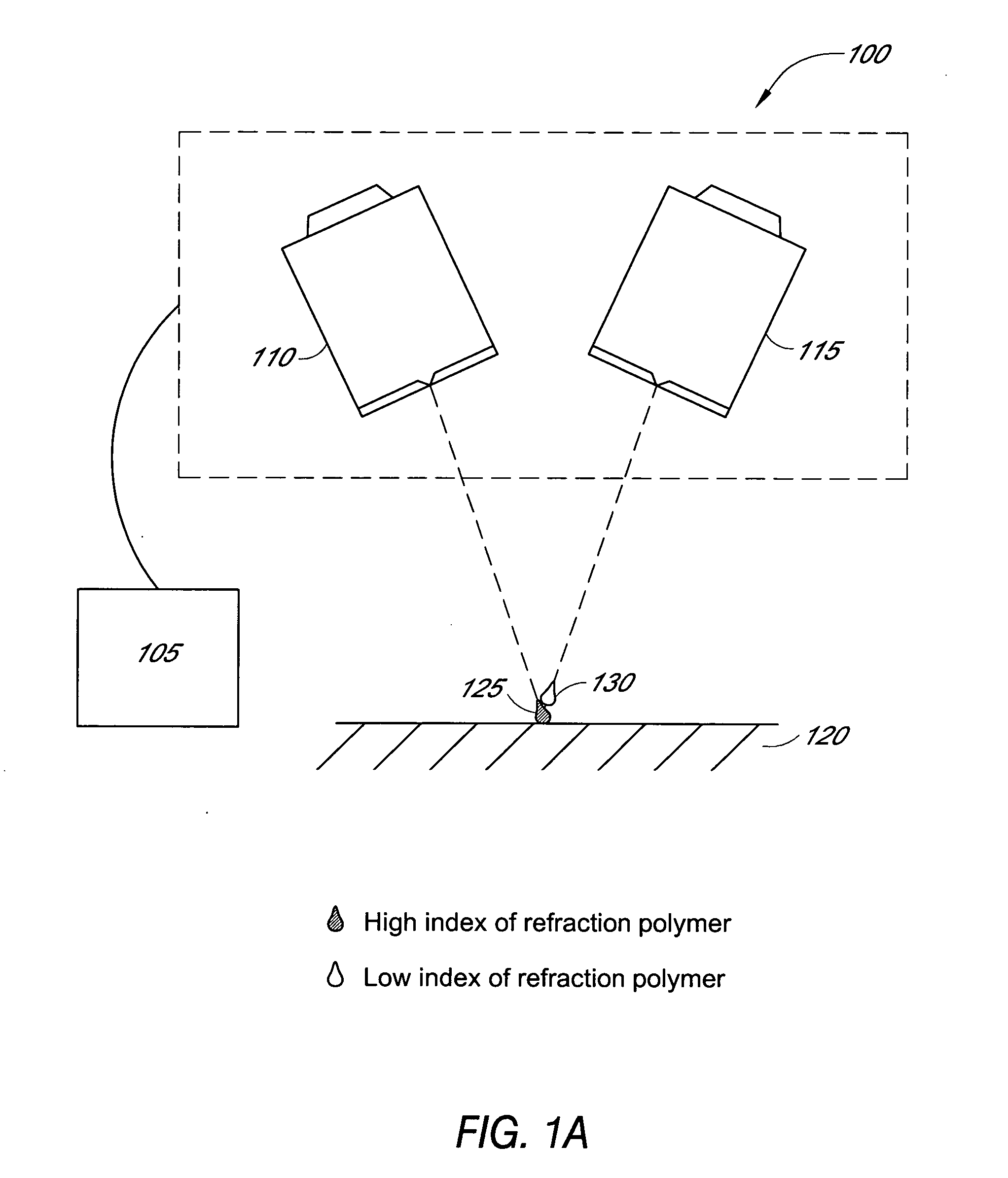Optical elements and methods for making thereof
a technology of optical elements and fabrication methods, applied in the field of optical elements, can solve the problems of unstable, unstable, uneconomical techniques, etc., and achieve the effect of unique optical properties and precise control of optical properties
- Summary
- Abstract
- Description
- Claims
- Application Information
AI Technical Summary
Benefits of technology
Problems solved by technology
Method used
Image
Examples
example 1
[0081] A kit having Parts I and II was made by intermixing the following ingredients:
[0082] Part I (high index): 23.0 g of reactive Bisphenol A glycerolate (1 glycerol / phenol) diacrylate (BPGDA, nD=1.557), 46.0 g of ethanol, 0.23 g of photoinitiator (Irgacure 184).
[0083] Part II (low index): 25.0 g of reactive 2-hydroxy ethyl methacrylate (HEMA, nD=1.453), 25.0 g of ethanol, 0.25 g of photoinitiator (Irgacure 184).
examples 2-7
[0084] A series of polymerizable compositions were prepared by intermixing the relative amounts (weight basis) of Parts I and II of the kit of Example 1 as shown in Table 1. Table 1 also shows the refractive indices (nD) of each polymerizable composition and the corresponding refractive indices of the polymers obtained by UV-curing each of the polymerizable compositions.
TABLE 1CompositionNo.Part II (%)Part I (%)nD (uncured)nD (cured)201001.4171.558320801.4131.535440601.4111.516560401.4071.504680201.4051.483710001.4041.474
example 8
[0085] A kit having Parts I and II was made by intermixing the following ingredients:
[0086] Part I (low index): 50.0 g of reactive tri(propylene glycol) diacrylate (TPGDA, nD=0.450), 50.0 g of ethanol, 0.51 g of photoinitiator, Irgacure 184, and 0.52 g of azoisobutyronitrile (AIBN).
[0087] Part II (high index): 162.8 g of reactive Bisphenol A glycerolate (1 glycerol / phenol) diacrylate (BPGDA, nD=1.557), 162.8 g of ethanol, 1.63 g of photoinitiator, Irgacure 184, and 1.63 g of thermal initiator, azoisobutyronitrile (AIBN).
PUM
| Property | Measurement | Unit |
|---|---|---|
| Power | aaaaa | aaaaa |
| Composition | aaaaa | aaaaa |
| Ratio | aaaaa | aaaaa |
Abstract
Description
Claims
Application Information
 Login to View More
Login to View More - R&D
- Intellectual Property
- Life Sciences
- Materials
- Tech Scout
- Unparalleled Data Quality
- Higher Quality Content
- 60% Fewer Hallucinations
Browse by: Latest US Patents, China's latest patents, Technical Efficacy Thesaurus, Application Domain, Technology Topic, Popular Technical Reports.
© 2025 PatSnap. All rights reserved.Legal|Privacy policy|Modern Slavery Act Transparency Statement|Sitemap|About US| Contact US: help@patsnap.com



